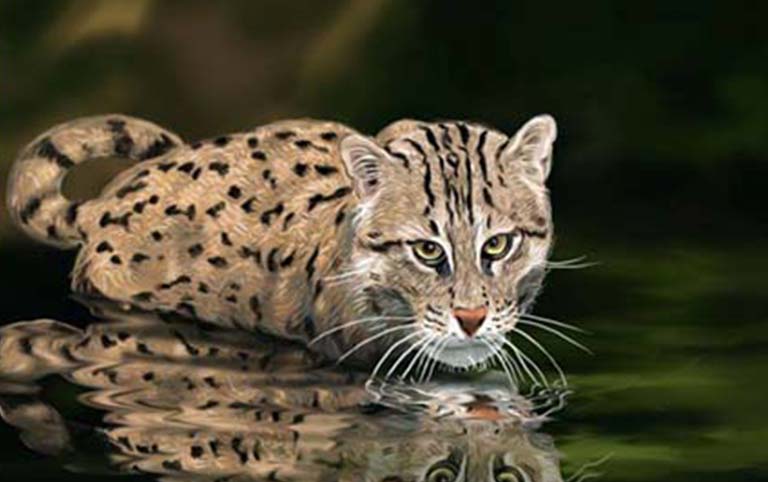Climate change and hydroecological responses of glaciarized mountain basins in Nepal Himalaya (ClicHER)

The ClicHER project was implemented in the selected two glaciered basins- the West-Seti and Tamor River basins in two different climatic settings of Nepal. The project was led by Narayan P. Ghimire. The melting of glaciers, changes in seasonality, snowfall, and water supply can affect the agriculture production, hydropower generation, ecosystem goods and services, and […]
Status of Red Panda in Gaurishankar Conservation Area

With financial support from Rufford Small Grant program, North England Zoological Society and technical support from SMCRF, research and conservation activities were conducted in Gaurishankar Conservation Area in Central Nepal. The project was successful to confirm the presence/distribution status of red panda in nine isolated patches namely: Tatopani, Listikot, Fulpigkatti in Sindupalchock block; Marbu, Kalinchock, […]
Assessment of community based Red Panda monitoring system in Langtang National Park and its buffer zone

A team led by Sagar Dahal and assisted by Amar Kunwar and Hari Basnet assessed Community based red panda monitoring system launched in Langtang National Park and its Buffer Zone by WWF Nepal from FY 2013 to FY 2016. The team reviewed and analyzed the whole process followed for community based red panda monitoring system […]
Fishing Cat Research

Mr. Sagar Dahal, team leader of Small Cat Conservation Group of Small Mammals Conservation and Research Foundation (SMCRF) conducted three major fishing cat targeted projects this year discovering the fishing cat for the first time in the human dominated landscape of central terai at Bara district. Similarly, eastern most record of fishing cat got recorded […]
Chepang, Cheuri and Chamera: Maintaining a delicate balance through conservation awareness in Chepang community in Nepal

Butter tree Diploknema butyracea (Cheuri -Nepali) is one of the major crops consumed by critically marginalized Chepang community of Nepal. This fruit plant is exclusively pollinated by fruit bats. Chepang also consume fruit bats as a major delicacy and hunted for sale. This traditional behavior of Chepang community is one of the most widespread known […]
National Pangolin Survey 2016

Pangolins (Genus Manis) are the most typical small mammal in the wild with unique rows of overlapping scales and long tongue. Of the four species of pangolins of Asia, Indian and Chinese pangolins that are found in Nepal are recently listed in Appendix I of the CITES agreement. Because of habitat destruction and overarching trade […]
Distribution and abundance of Satyr Tragopan in Manaslu Conservation Area

Manaslu Conservation Area is biodiversity spot which harbors wide range of flora and fauna, thus avian diversity falls no apart to diversity. This is why MCA is proposed for upgrading of the area from ‘Potential Important Bird Area’ to the ‘Bird Important Area’. The study is the first ever scientific research on Satyr Tragopan in […]
Population status, Occupancy and Distribution Modelling of Cheer Pheasant in Dhorpatan Hunting Reserve

The Cheer pheasant (Catreus wallichii) is a threatened species listed as vulnerable in IUCN Red list and legally protected by the Government of Nepal. The conservation of this species is of great importance worldwide and regular monitoring of its status and distribution are necessary. This study was done by Mr. Hari Basnet to assess the […]
Functionality study of North-South Linkage in Chitwan-Annapurna Landscape with Biodiversity Survey of Biodiversity Important Areas (BIAs)

Chitwan-Annapurna Landscape (CHAL) with an area of 32,057 km2 is a major biodiversity hotspot in central Nepal. It acts as a biological corridor that links Chitwan National Park to Annapurna Conservation Area (ACA). Four potential north south corridors were identified along CHAL but the functionality of these corridors was not clear. We study to assess […]
Biodiversity survey of Chandragiri Hill, Kathmandu, Nepal

Two Important Bird Areas lie in Kathmandu valley, but even having potentiality, Chandragiri hill is not explored. It lies in the south of Kathmandu Valley representing the true mid hills of Nepal which is rich in biodiversity, but constantly being threatened due to habitat distribution. We explored the biodiversity of Chandragiri hill with species focus […]
